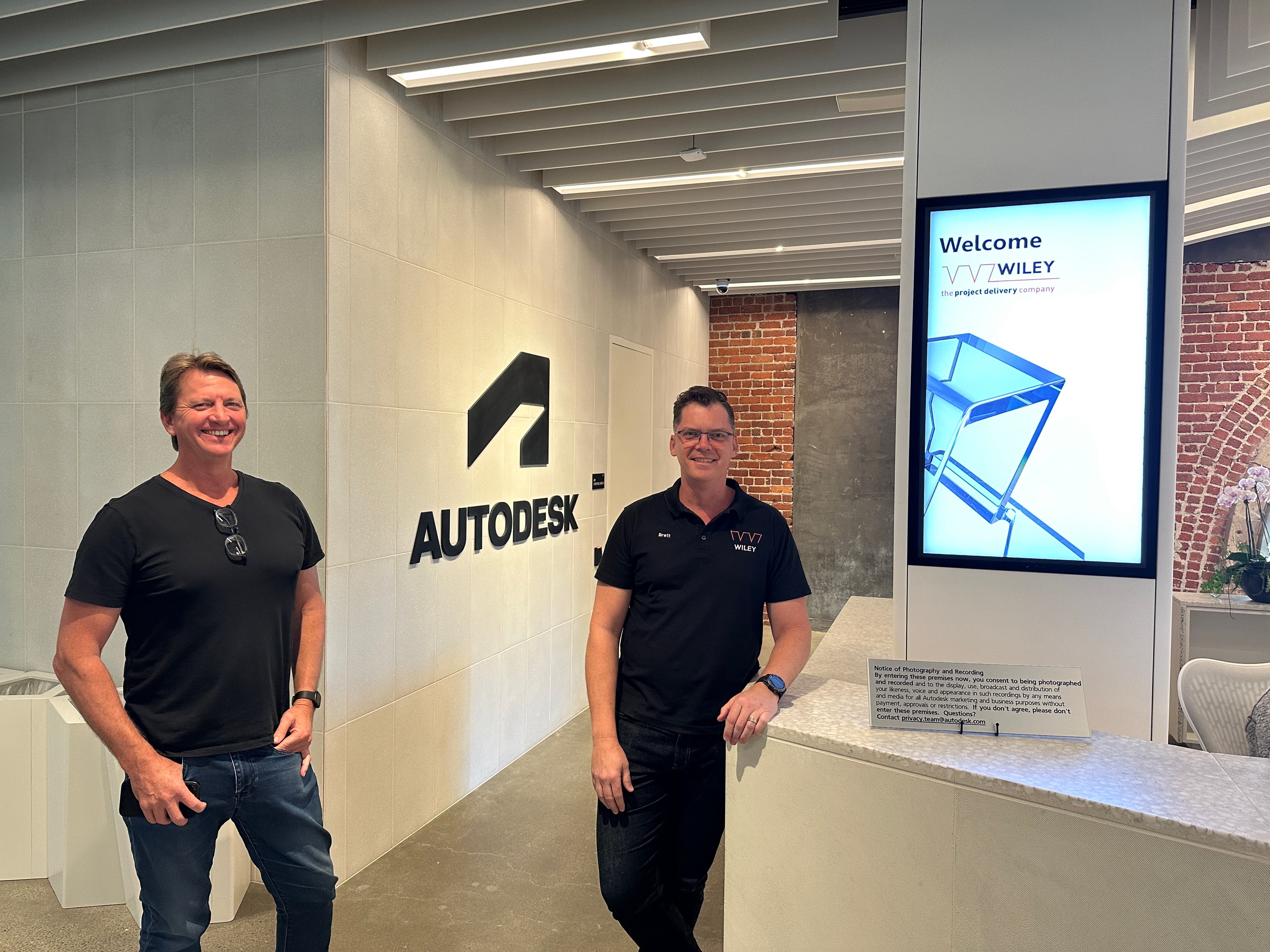Last week, some 10,000 people working in design, architecture, construction, manufacturing, and media descended upon New Orleans for Autodesk University.
Autodesk is an American software giant that builds ecosystems for teamwork. Here at Wiley, we’ve been using Autodesk Construction Cloud (ACC) to allow all stakeholders, whether in offices or jobsites, to collaborate in real time. ACC puts everything is in the same place, which speeds up communication and ultimately lowers costs for our clients. We’ve written about how ACC is going to save you time and money before, so go check that post out.
We made the journey to New Orleans because we believe ACC is the future of the construction industry. Not just here in Australia, but globally. As Wiley’s Digital Engineering Lead Ben McKay puts it, ACC is a game changer. Not just for us, not just for our clients, but for everyone involved in the delivery of a project – from consultants to contractors and beyond.
“I’ve always said that together is better,” says Tom Wiley, Executive Chairman. “Autodesk have created a toolset based on this premise and it’s changed our industry for the better, forever.”
As the jet lag recedes, we want to share what we’ve learned at Autodesk University. So here it is, in six dot points.
- Major companies around the world are using ACC for their projects. This gives us confidence in what we’re doing, but also in the long-term practicality of the technology. This isn’t wishful thinking. ACC works and we’re not the only ones using it (although we are the only ones using it this way in all of the APAC region!).
- Actually, on that point, we got the sense we’re using ACC in ways that others are not. Lots of companies are on the bandwagon, but it’s often to complement old processes. We’re comparatively all in and we’re eradicating old, inefficient processes. And that’s really good news for our clients who want projects delivered with ease, transparency and accountability.
- The future is email free. Sounds too good to be true, right? At the moment, different disciplines are communicating via PDFs and spreadsheets, all exported and emailed. There’s no traceability about who has sent or seen what, and there’s no guarantee everyone has the latest version. We live in world that has managed to eliminate hard copies, but only just. Very soon we won’t even use email – and frankly we can’t wait.

From left, our CEO Rob Barron and Chief Future Officer Brett Wiskar at the Autodesk HQ in San Francisco.
- The future is also very smart. Soon building and facilities will feed live data back to the cloud from all kinds of sensors, allowing owners to make more informed decisions about energy usage and maintenance. We used to hand over new buildings to their owners and walk away. Now, thanks for a proliferation of built-in technology wired to ACC, we can advise on the best ways to run and care for your new investment. That’s great long-term value for you.
- And what about the future of the industry as a whole? Well in five years’ time, ACC will have become standard place. All companies will be using it, or an Autodesk competitor. With that shift will come a change in expectations around how long things take. No one will accept a multi-week process to get a change approved. Instead, as teams and managers use the same platforms, changes will be drawn-up, priced and approved in a matter of hours. Again, this will save clients money and lead to much more accurate price forecasts across the industry.
- Everyone at Autodesk knows they’re onto a win. While all the Autodesk University attendees were happy to be at a conference for the first time in over two years, this was different. The mood across the global construction industry is that things are changing, and it’s clear to everyone – Autodesk included – that Autodesk is forefront of that change.
If you’re looking to build you next project, or you’re a subbie and you want to chat about what the future of construction looks like for your business, chat to us. We’re here to talk!



